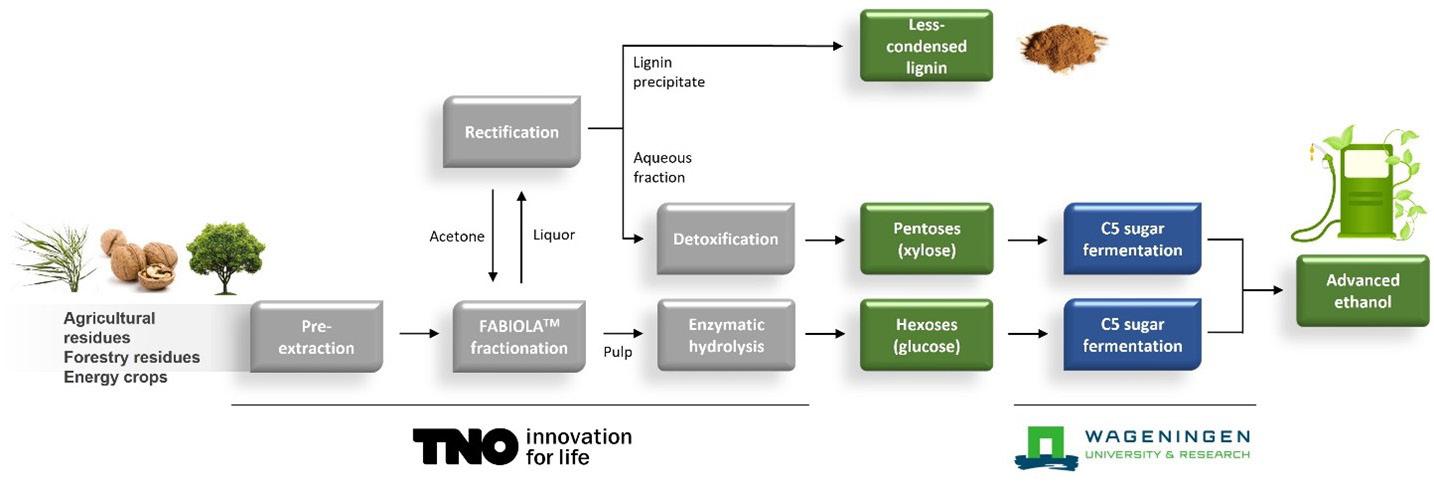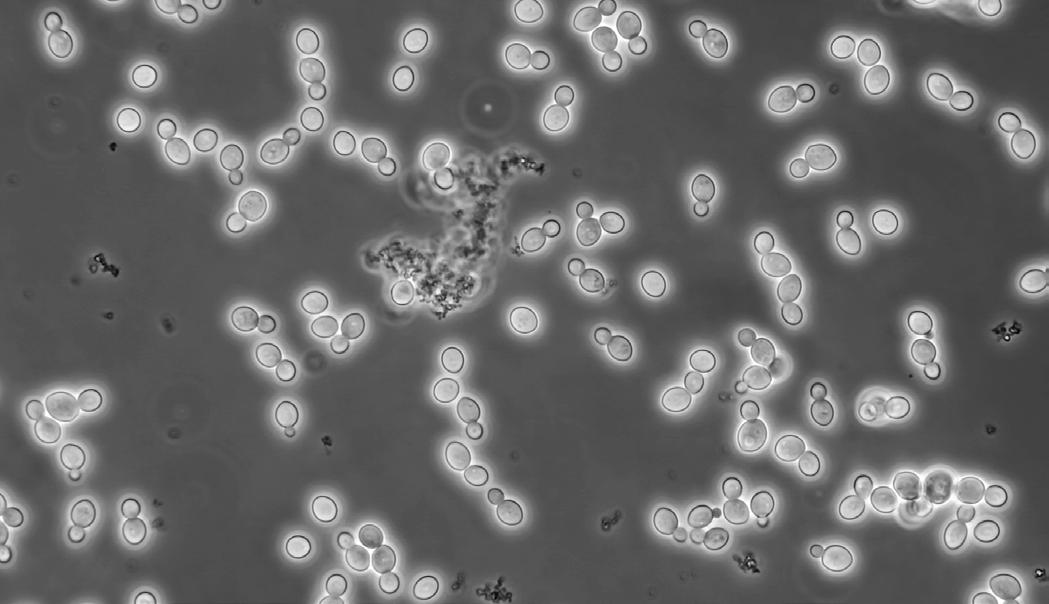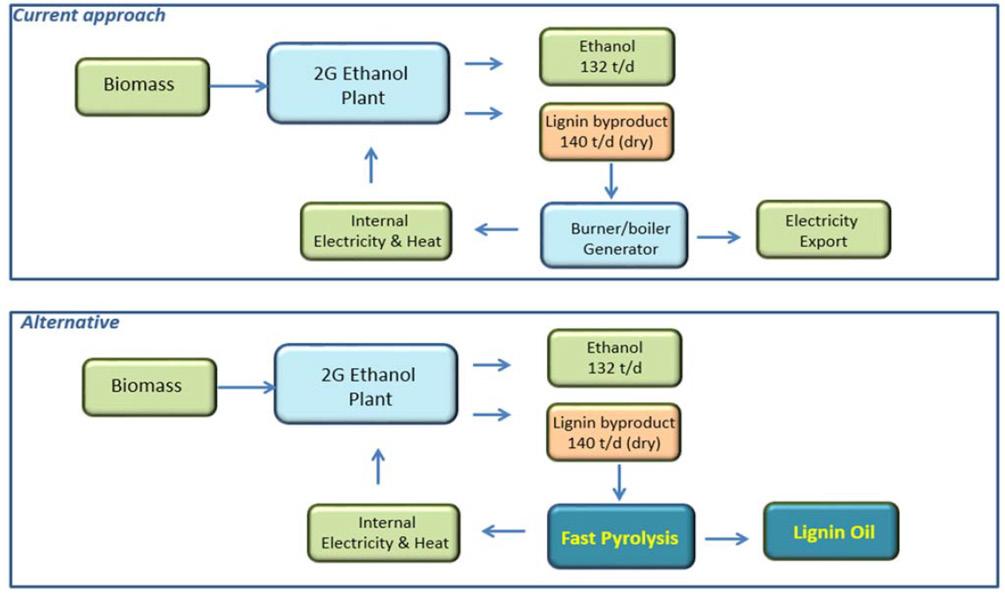
12 minute read
6. Biochemical conversion and process efficiency for advanced biofuels
6
Biochemical conversion and process efficiency for advanced biofuels
Advertisement
One of the work packages of BECOOL focused on increasing the energy efficiency of biochemical pathways to produce cellulosic ethanol from the diverse range of feedstocks studied by the project. This included the optimization of a multi-step process encompassing biomass pre-treatment and enzymatic hydrolysis to obtain C5 and C6 sugars followed by the fermentation of cellulosic and hemicellulosic sugars into alcohols (ethanol and butanol). Increasing both the yields and the fermentability of C5 and C6 sugars were the key objectives of this task. For this scope, the FABIOLATM organosolv fractionation technology developed by TNO in the Netherlands was used for the pretreatment of biomass, which integrated with enzymatic hydrolysis, produces C5 and C6 sugars streams and high-quality lignin. Wageningen University performed the research activities on the fermentation of C5 and C6 sugars to ethanol and butanol.
The process was applied to a range of biomass types including agricultural residues, forestry residues and energy crops, containing significant amounts of non-lignocellulosic components (minerals and extractives) that can interfere with the fractionation process and affect the final yield of fermentable sugars. For this reason, TNO implemented a pre-extraction process in order to enhance the robustness of the fractionation and its capability to treat the whole range of biomass feedstock.
Validating the flexibility and the scalability of this optimized processes was another of the objectives of this work package, as well as developing a conceptual value chain based on biochemical route for the production of advanced biofuels.
Lastly, the project also aimed at valorizing lignin rich residues through the integration of the pyrolysis and gasification pathways with the biochemical production of lignocellulosic ethanol as an alternative to the typical use of byproducts of cellulosic ethanol plants in power generation.
Pre-extraction and FABIOLATM organosolv fractionation
The FABIOLA™ process is a mild acetone organosolv process that can effectively fractionate the three main lignocellulose constituents from a wide variety of feedstocks3. Fractionation results in a hydrolysable cellulose pulp, high sugar yields from the (hemi)cellulose and the isolation of a lignin that is of higher quality, i.e. lesscondensed, than lignins obtained from higher severity biorefining processes.
Initially this technology was designed and developed to work in conditions optimized for relatively clean feedstocks such as hardwood chips. The pre-extraction process was initially developed in other projects4, n BECOOL it was further optimized in BECOOL in order to apply the FABIOLATM fractionation technology to a wider range of lignocellulosic feedstocks. TNO’s work focused on the integration of the pre-extraction and organosolv fractionation processes and their demonstration at TRL 3-4 for a selection of feedstocks with potential to expand the biomass supply chain of advanced biofuels. The pre-extraction process demonstrated enough robustness to treat also herbaceous lignocellulosic biomass and to remove mineral and extractives content from the original feedstocks. This is very beneficial for the downstream use of the pre-treated biomass, making the feedstock more homogenous for the further fractionation step, reducing corrosion and increasing the purity of product streams. This integrated process allowed to recover more than 90% of the C6 sugar available in the product pulps from all the different feedstocks, whereas C5 recovery, delignification and lignin yield showed more variable yields among the different biomass types.
Enzymatic hydrolysis and detoxification
For the downstream processing of the sugars the research work focused on the enzymatic hydrolysis of the pulp and on the detoxification of the C5 sugar streams, with the aim to assess the efficiency of enzymatic hydrolysis on lignocellulosic feedstocks and to develop ways to detoxify C5 sugars to a suitable level for ethanol fermentation. The research work demonstrated that organosolv pulps obtained from most feedstocks and herbaceous biomass in particular, can be treated with economically feasible doses of enzymes, with a high consistency process (25% w/v) delivering sugar syrups with high C6 sugars concentrations (130-170 g/L glucose).
Biomass pretreatment conditions can lead to the degradation of sugars and lignin and the release of compounds such as furfural and phenolics that can be inhibitory to enzymes or to fermenting microorganisms even at low concentrations. For the detoxification of C5 sugars, a scalable absorption process was developed using activated carbon, that effectively removes these inhibitory components from C5 streams. Both the enzymatic hydrolysis and detoxification were demonstrated at pilot scale.
3. Smit, A., & Huijgen, W. (2017). Effective fractionation of lignocellulose in herbaceous biomass and hardwood using a mild acetone organosolv process. Green Chemistry, 19(22), 5505-5514. 4. Smit, A. T., van Zomeren, A., Dussan, K., Riddell, L. A., Huijgen, W. J., Dijkstra, J. W., & Bruijnincx, P. C. (2022). Biomass Pre-Extraction as a Versatile Strategy to Improve Biorefinery Feedstock Flexibility, Sugar Yields, and Lignin Purity. ACS Sustainable Chemistry & Engineering.
Ethanol fermentation using C6 and C5 sugars obtained from FABIOLATM organosolv fractionation
Extensive research and industrial development was conducted in the past years and is still ongoing on the fermentation of hydrolyzed lignocellulosic materials. The conversion of glucose-rich streams is well developed and can reach high yields and concentrations, thanks to the availability of highly effective strains of Saccharomyces yeast. The fermentation of streams rich in xylose or sugars other than glucose is still challenging, as the bioethanol-producing strains developed as of today are less effective than those for glucose fermentation and the titers of bioethanol reached are lower. An additional challenge for the fermentation of the xylose-rich (C5-stream) of the FABIOLATM process resides in the inhibitory compounds present in this stream, consisting of furfurals, lignin-derived soluble compounds or organic acids that are derived from the biomass. The work of Wageningen Research in BECOOL adopted a two-strain approach to ferment separately the C6 and C5 streams from the FABIOLATM fractionation. Streams from a number of different feedstocks were studied for bioethanol production, including wheat straw, corn stover, sorghum, hemp and sunn hemp. The strains selected were Saccharomyces yeast (for the glucose-rich stream,C6) and Spathasphora passalidarum (for the xylose-rich stream, C5).
A thorough and detailed screening of the substrates derived from the FABIOLATM organosolv pre-treatment was carried out at lab scale. While the C6 streams had
high purity and did not need any further purification before fermentation, the C5 sugar streams required a detoxification step using granulated activated carbon. The fermentation tests on C6 streams were carried out using the stream diluted 1:1 with fermentation medium. Good growth of the strains was observed on all substrates and the ethanol yield of the lignocellulosic feedstocks was only slightly lower than the yield in the glucose control. The fermentation tests on the C5 substrates were conducted with undiluted streams. Good growth of the yeast was observed for wheat straw, maize stover, fiber sorghum, while higher initial dilution was necessary for sunn hemp and hemp to avoid the inhibition of the fermentation.
Ethanol production from beech C6 sugar
BECOOL feedstocks
C6 sugars (no treatment)
C5 sugars (detoxified) Fermentability @ lab scale Yield on consumed sugars
0.40 – 0.42 g ethanol/g sugar
0.30 – 0.41 g ABE/g sugar
0.29 – 0.35 g ethanol/g sugar
0.33 - 0.41 g ABE/g sugar


Fig 44. Growth of S. Passalidarum on C5-streams from beech wood detoxified using granulated activated carbon (GAC).
stream by S. cerevisiae was tested under controlled conditions in a bioreactor. The glucose in C6 medium was completely consumed in 44 h with a maximum rate of 7.9 g/L.h. In the reference cultivation on YP medium with a lower glucose content, consumption was completed in 20 h and with a higher rate of at least 9.2 g/L.h. On the other hand, the ethanol yield from C6 medium was higher at 0.47 g per g glucose. Other products were glycerol (7.1 g/L) and acetic acid (0.8 g/L). As an example of fermentation of detoxified C5 streams, Figure 3 shows the growth of S. passalidarum on C5 stream from beech wood pellets, as such and detoxified using different ratios of granulated activated carbon (GAC). When the detoxification was performed using a concentration of GAC of 2% (w/v) or higher, the growth of the strain on the hydrolysates was similar to the growth observed on control medium.
Process upscaling
After the lab tests, an upscaling of the fermentation at 10 L scale was conducted, using beech wood streams as a feedstock. In the C6 stream, the glucose was entirely consumed after 24 hours of fermentation, yielding around 100 g/L of EtOH from the initial 200 g/L of sugar. The C5 stream needed dilution, and the fermentation resulted in complete utilisation of xylose whithin 48 hours of incubation, reaching ethanol titers of 30 g/L.

Fig 45. Growth of S. Passalidarum on C5-streams from beech wood detoxified using granulated activated carbon (GAC). Source: WFBR.
Valorization of lignin-rich residues from biochemical processing
The fractionation and hydrolysis of lignocellulosic biomass generates a ligninrich residue stream in addition to C5 and C6 sugars, whose purity depends on the technology and the process conditions applied. In industrial cellulosic ethanol plants this residue is normally combusted to generate heat and power for the plant’s energy needs and for feeding into the electricity grid, however finding higher value applications for lignin is an important aspect to increase the economic viability and the sustainability of biorefinery processes.
Lignin can be the platform for the production of a range of specialty chemicals and biobased products, that can be used in many applications, such as coatings, varnishes, treated wood, building materials and others, but these applications require high purity lignin with stable and predictable quality and structural characteristics, that are not easily obtained in industrial scale cellulosic ethanol processes. On the other hand, lignin-rich streams of lower purity and quality can be valorised through thermal conversion pathways, such as fast pyrolysis, to convert biomass into a liquid bioenergy carrier called FPBO (Fast Pyrolysis Bio-Oil). During the fast pyrolysis process gaseous and solid (char) by-products are generated in addition to the FPBO.
In commercial scale fast pyrolysis plants, these by-products are combusted to generate heat and power for the pyrolysis plant. The FPBO can then be used for the production of biofuels through gasification or hydrotreating, or alternatively act as source of bio based chemicals and materials, and as such potentially generate a higher added value compared to the renewable electricity alternative. This solution was studied in BECOOL by BTG which carried out a techno-economic analysis of a process replacing a lignin combustor in an industrial 2G ethanol plant with a fast pyrolysis unit, so that instead of excess electricity from lignin, a lignin oil can be produced as additional product. The FBPO was produced from samples of lignin rich residue provided by an industrial plant and then further characterized, while the process integration was modelled in detail to investigate the heat and power integration of both plants, using an open source modelling software. Chemical and physical analysis showed that the lignin derived FPBO has strong resemblance to pyrolytic lignin, obtained by the fractionation of FPBO produced from conventional lignocellulosic biomass. The modelling study showed that from the technical perspective the integration of a fast pyrolysis unit with a 2G bioethanol production facility is possible, although lignin is known to cause operational problems when converted in a standard fast pyrolysis process, due to the melting behavior of the lignin. Two approaches were investigated to avoid these operational problems: one was the pre-treatment of the lignin using Ca(OH)2 and the other was the replacement of the use of Al2O3 as a heat carrier in the pyrolysis process. The first approach resulted in a higher pyrolysis oil production rate, 0.37 ton of pyrolysis oil (at 16 MJ/kg) for each ton of bioethanol but the energy available in the byproducts is barely sufficient to cover the heat and power needs of both processes. The second approach produces less pyrolysis oil, 0.18 ton of FBPO (at 16 MJ/kg) for each ton of bioethanol, but the integration of the heat and power in the ethanol production process is simplified and more flexible. Although the business as usual scenario where the lignin is used for heat and power is still the most convenient technical solution, the use of FPBO for high added-value applications can make the integration of FPBO production in a bioethanol production facility economically feasible.

Conclusions
The EU Green Deal and the Fit-for-55 package raised the targets for the reduction of GHG emissions from transport fuels and this opens opportunities for alternative and emerging technologies in renewable and advanced biofuels. Increasing the efficiency of biochemical conversion technologies is an important step to ensure that the avoided GHG emissions from the use of advanced biofuels are as high as possible, and that a cost-competitive production of biofuels can be attained at large scale. The work conducted by TNO and Wageningen University provided successful proof of concepts of the biochemical conversion of a wide array of lignocellulosic feedstock, and validated the scalability of the process, using the FABIOLATM technology as a means of fractionation of lignocellulosic biomass prior to enzymatic hydrolysis and fermentation of the sugar streams. To date the C6 to alcohols routes show the greatest potential for scale up using this technology, whereas for the C5 routes some process improvements are still needed to optimize the integration of upstream fractionation and downstream fermentation.
Key points: Biochemical conversion and process efficiency for advanced biofuels
• The FABIOLATM organosolv fractionation technology was successfully demonstrated at pilot scale for the processing of a diverse range of lignocellulosic feedstocks including agricultural residues and fiber crops, producing high-concentration streams of C5/C6 sugars and highquality lignin.
• The fermentation of C6 and C5 streams achieved good ethanol yields from all biomass types.
Biobutanol was also produced at high concentrations.
• Fast pyrolysis can be technically integrated in an industrial cellulosic ethanol process, to convert the lignin rich residues into an intermediate energy carrier (FBPO), for further upgrading into transport fuels or high-value chemicals for bio-based applications.
REFERENCES
Production Of Bio-Ethanol From Beech Wood Pellets Via Mild Acetone Organosolv Fractionation. K. Dussan, T. De Vrije, R. Van De Vondervoort, P.A. Bonouvrie, A.T. Smit, A.M. Lopez Contreras, 30th European Biomass Conference & Exhibition, 2022
Biomass Pre-Extraction as a Versatile Strategy to Improve Biorefinery Feedstock Flexibility, Sugar Yields, and Lignin Purity Smit. A. T., van Zomeren, A., Dussan, K., Riddell, L. A., Huijgen, W. J., Dijkstra, J. W., & Bruijnincx, P. C. (2022).. ACS Sustainable Chemistry & Engineering.
Production of bioethanol from beech wood pellets via mild acetone organosolv fractionation de Vrije T., Dussan K., van de Vondervoort R, Bonouvrie P.A., Smit A.T., López-Contreras A.M. Proceedings of the 30th European Biomass Conference and Exhibition, 2022.










